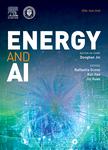Toward cost-effective residential energy reduction and community impacts: A data-based machine learning approach
作者机构:Department of Mechanical EngineeringUniversity of DaytonDaytonOH 45469-0238USA Department of Chemical EngineeringUniversity of DaytonDaytonOH 45469-0238USA
出 版 物:《能源与人工智能(英文)》 (Energy and AI)
年 卷 期:2021年第4卷第2期
页 面:66-79页
核心收录:
学科分类:07[理学] 0807[工学-动力工程及工程热物理] 0802[工学-机械工程] 0811[工学-控制科学与工程] 0701[理学-数学] 0812[工学-计算机科学与技术(可授工学、理学学位)] 0702[理学-物理学] 070101[理学-基础数学]
主 题:Building energy efficiency Data mining Machine learning Levelized cost of energy saving Energy reduction strategy Economic input-output analysis
摘 要:Many *** incentivize residential energy reduction through rebates,often in response to state mandates for energy reduction or from a desire to reduce demand to mitigate the need to grow generating *** assumption built into incentive programs is that the least efficient residences will be more likely take advantage of the ***,however,is not always the *** main goal of this study was to determine the potential for prioritized incentivization,i.e.,prioritizing incentives that deliver the greatest energy savings per invest-ment through an entire *** uses a data mining approach that leverages known building and energy characteristics for predicting energy consumption of houses that collectively can be considered representative of all residences within an entire *** this model,it estimates natural gas consumption and savings,and corresponding implementation costs associated with the adoption of the most impactful energy reduction *** resulting savings and cost estimates allow us to develop a sequential energy reduction strategy whereby the most economic measures within the whole utility district are *** results show that an energy reduction of 36%can be achieved at a levelized cost of less than$14 per mmBTU($14,780 per MJ),demonstrating the strong potential of this approach.A corresponding Economic Input–Output Analysis captures the cascading community economic impacts of this *** results show that for the roughly 45,000 single-family residences in the studied region,an initial energy efficiency investment of$26M could result in a total cascading multiplier economic impact of$41M and additional economic impacts of$2.2M for the lifetime of the considered energy efficiency measures.



